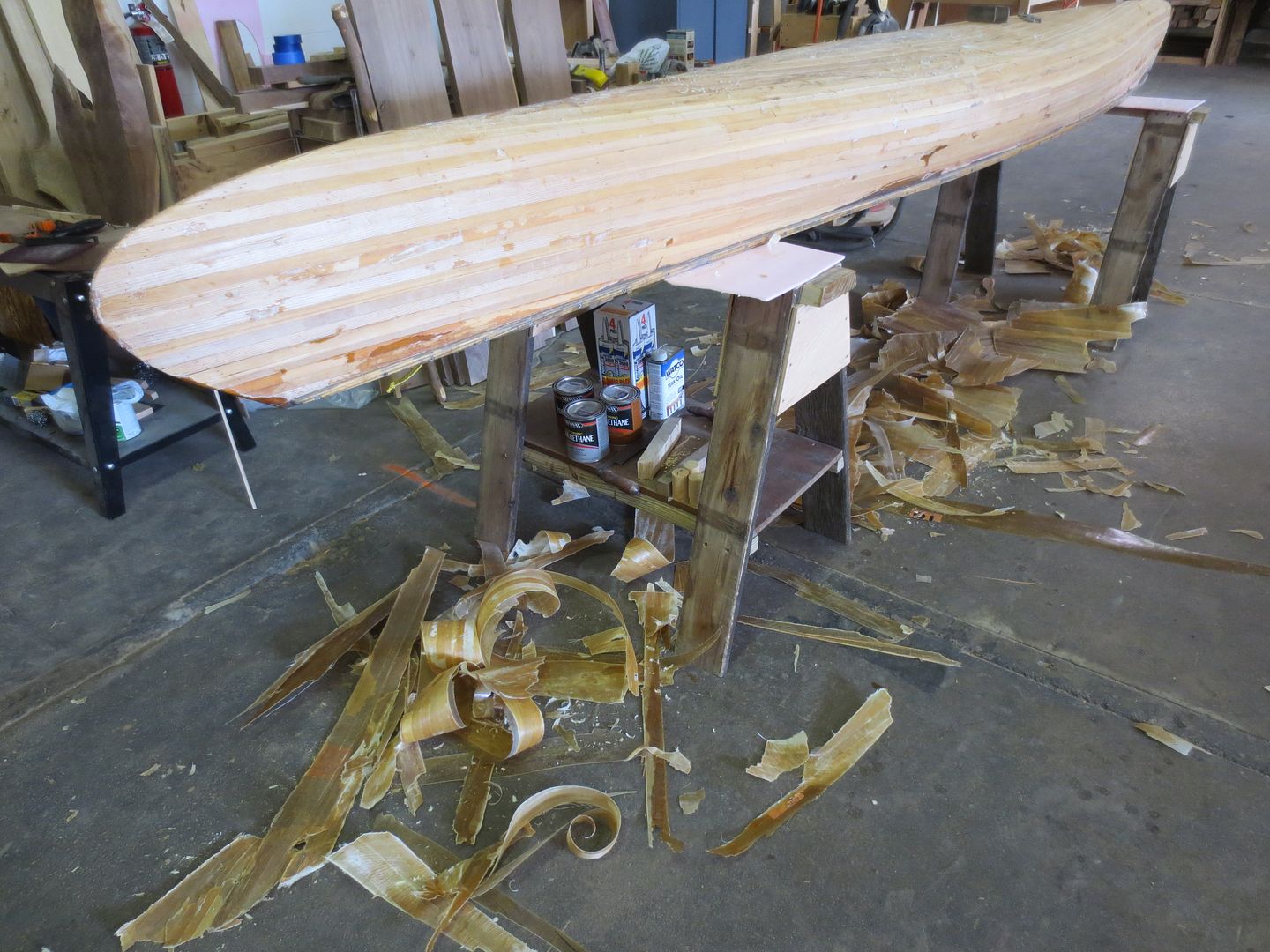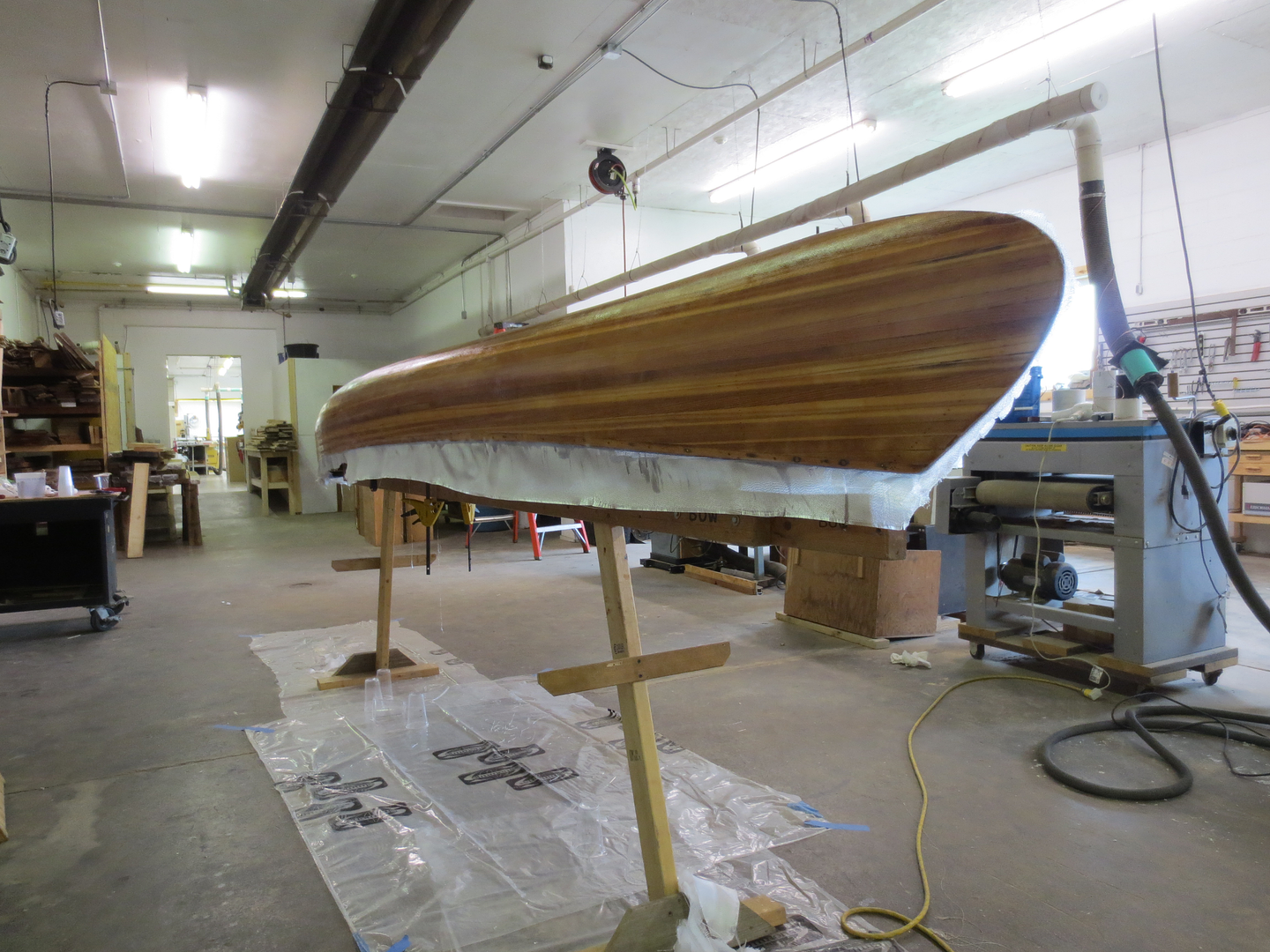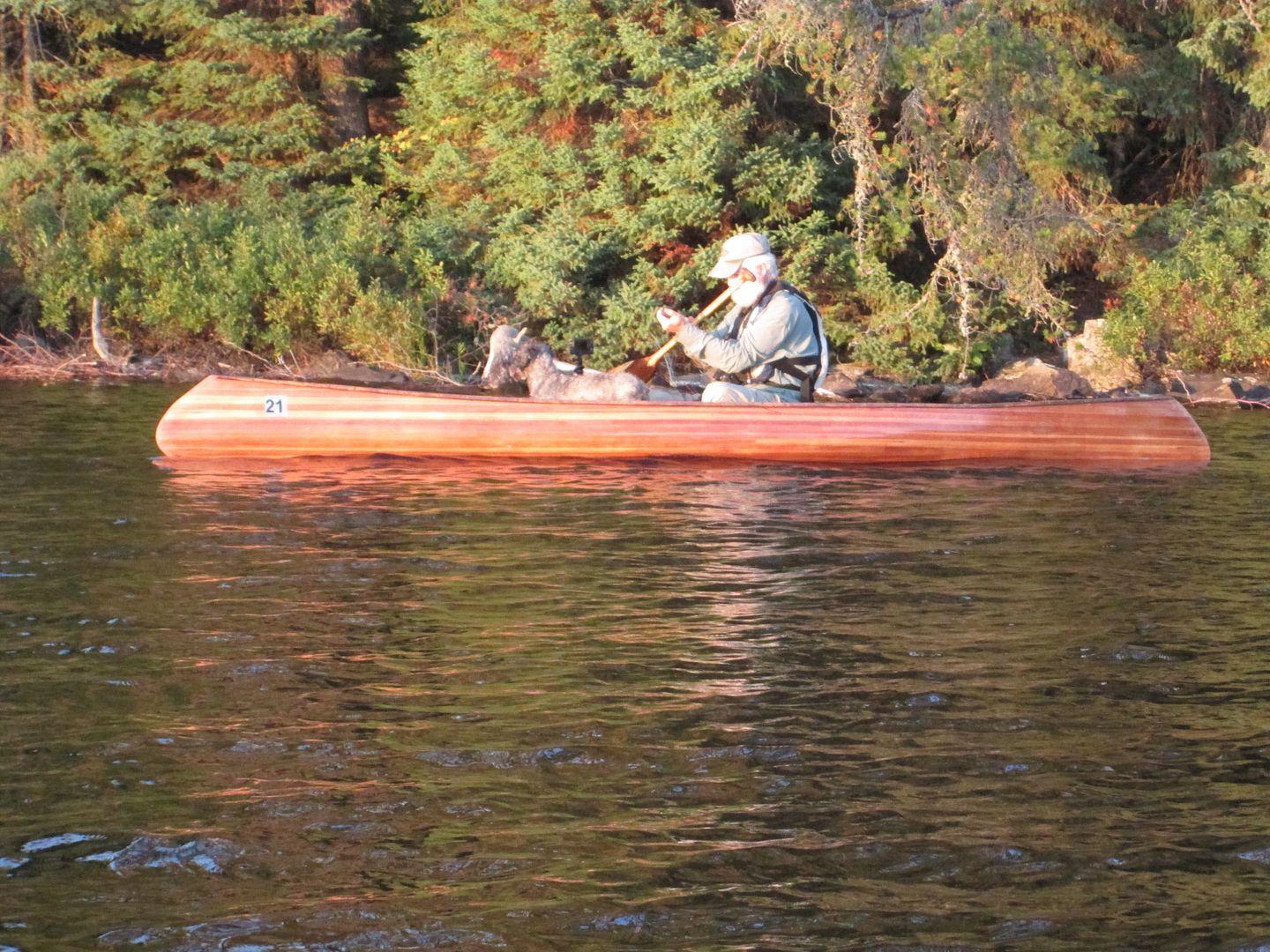BrockMontana
Curious about Wooden Canoes
I inherited this old beaut from my Grandpa. My Grandma bought it for him in 1970 and he passed away in the mid nineties. It’s been sitting unused in my grandma’s garage ever since, until a month or so ago when I brought it to it’s new home. I’ve inspected the inside and outside and it looks like it’s in pretty good shape with a few exceptions. My goal is to do all the repair work myself and get it ready to get it back in the water this spring. Here are the issues I’ve discovered:
1. some of the planks have cracks and are peeling up on the inside (pictured) this seems like the most pressing of issues. I’m guessing the boat just dried out over time. How does one go about repairing these spots? Do they need replacing with whole new planks, or can I use some sort of filler and rehydrate the wood to get it back to its original form?
2. there are spots on the hull where it looks like the boat has rubbed against one too many rocks. (Not pictured, but I can go take some pics if necessary) None of the spots are actual holes, they just look like the finish has worn off. What kind of finish would this boat have had? I’m definitely a beginner to the world of wooden boats, but it doesn’t look to me like there is fiberglass on it. It just looks like wood and maybe some sort of shellac based finish. Hopefully someone on here can help educate me.
Any and all advice from the members of this forum would be greatly appreciated.
1. some of the planks have cracks and are peeling up on the inside (pictured) this seems like the most pressing of issues. I’m guessing the boat just dried out over time. How does one go about repairing these spots? Do they need replacing with whole new planks, or can I use some sort of filler and rehydrate the wood to get it back to its original form?
2. there are spots on the hull where it looks like the boat has rubbed against one too many rocks. (Not pictured, but I can go take some pics if necessary) None of the spots are actual holes, they just look like the finish has worn off. What kind of finish would this boat have had? I’m definitely a beginner to the world of wooden boats, but it doesn’t look to me like there is fiberglass on it. It just looks like wood and maybe some sort of shellac based finish. Hopefully someone on here can help educate me.
Any and all advice from the members of this forum would be greatly appreciated.
Attachments
-
 64E982AD-9D73-4BDE-9D66-29731D88EF02.jpeg226.4 KB · Views: 622
64E982AD-9D73-4BDE-9D66-29731D88EF02.jpeg226.4 KB · Views: 622 -
 3E520A4A-486B-46FE-8D1E-B06C1EE1660F.jpeg236.2 KB · Views: 643
3E520A4A-486B-46FE-8D1E-B06C1EE1660F.jpeg236.2 KB · Views: 643 -
 38C624CA-099F-4AB2-97EB-21F541E3D195.jpeg201.5 KB · Views: 611
38C624CA-099F-4AB2-97EB-21F541E3D195.jpeg201.5 KB · Views: 611 -
 5FFB321D-6DF2-4631-B077-E52BC72A6225.jpeg191.7 KB · Views: 599
5FFB321D-6DF2-4631-B077-E52BC72A6225.jpeg191.7 KB · Views: 599 -
 75636D54-FAE9-4DE0-B913-54D75B5763D3.jpeg200.6 KB · Views: 636
75636D54-FAE9-4DE0-B913-54D75B5763D3.jpeg200.6 KB · Views: 636 -
 5899ECE7-3172-4262-B9E3-7905EE6AE86F.jpeg276.9 KB · Views: 638
5899ECE7-3172-4262-B9E3-7905EE6AE86F.jpeg276.9 KB · Views: 638 -
 D771CFED-AE28-48F6-8550-A2C2513B78D0.jpeg238.2 KB · Views: 593
D771CFED-AE28-48F6-8550-A2C2513B78D0.jpeg238.2 KB · Views: 593 -
 1C22591F-903D-4F53-AA93-CCF6DE50F470.jpeg249.5 KB · Views: 634
1C22591F-903D-4F53-AA93-CCF6DE50F470.jpeg249.5 KB · Views: 634



